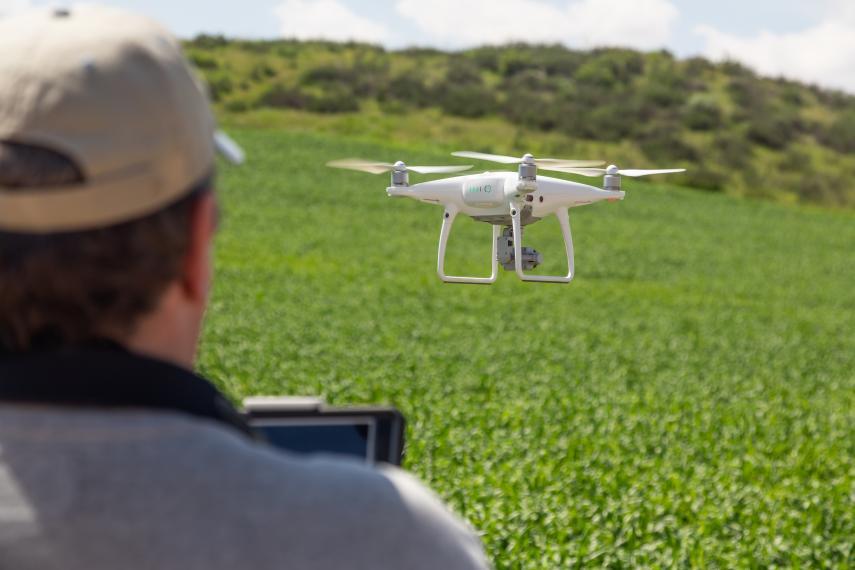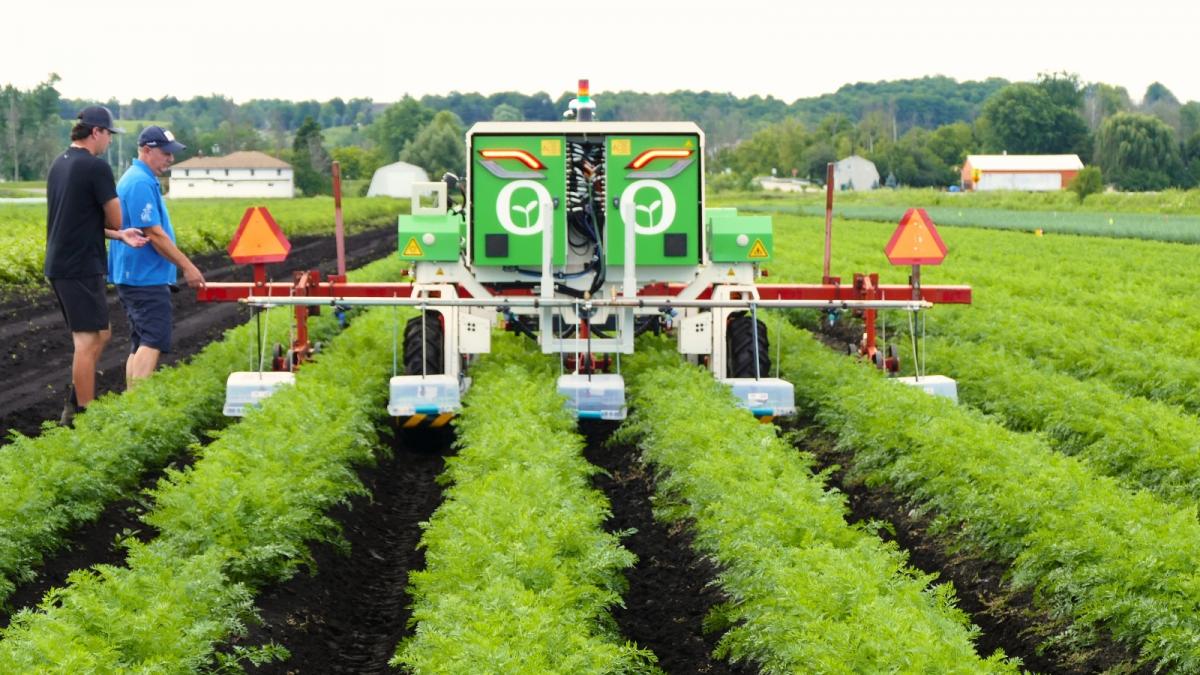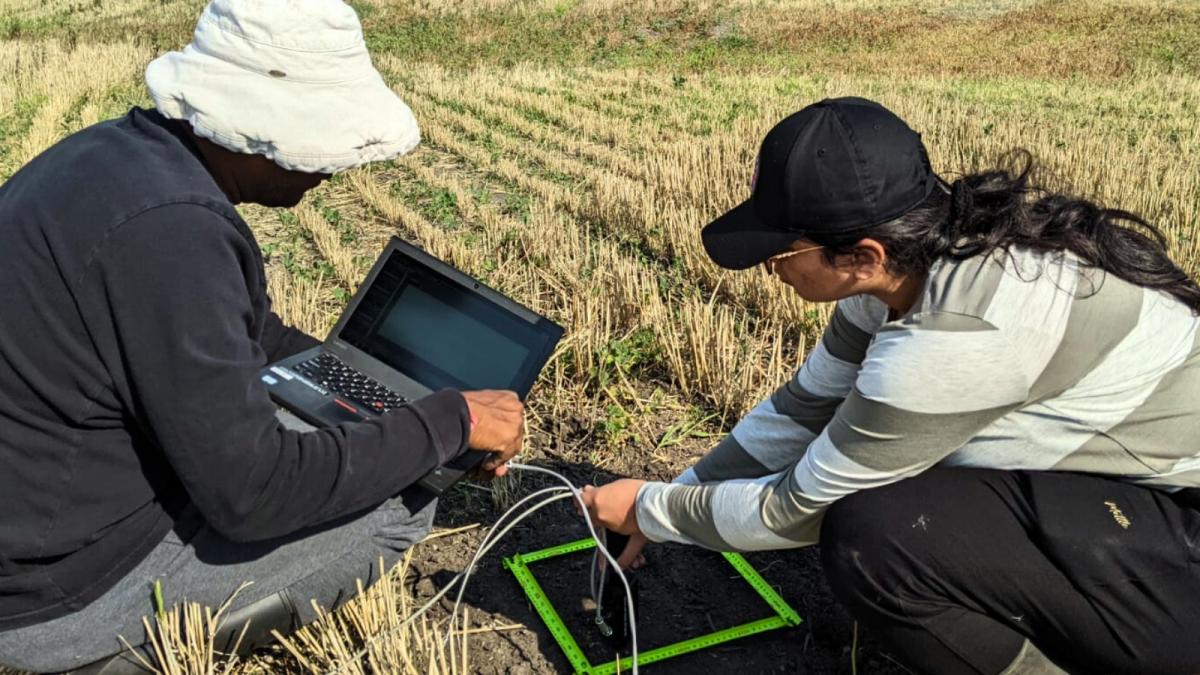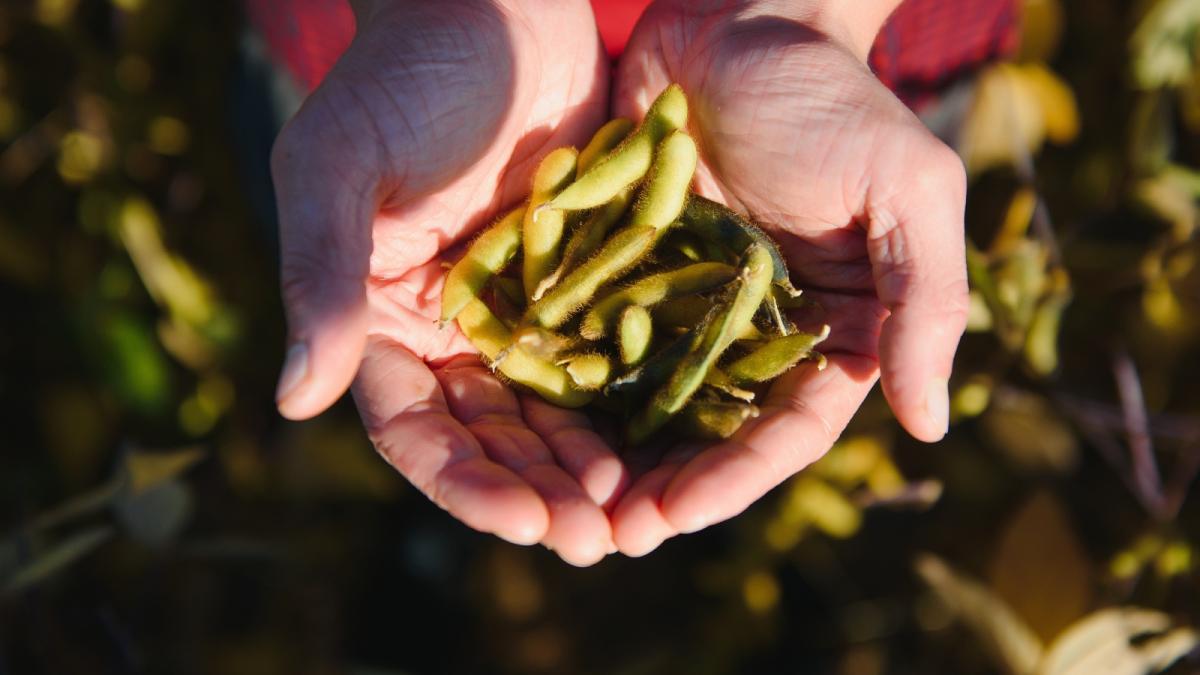U of G Propelling a Tech-Driven Agri-Food Future

The future of farming might bring “robocrop” cultivators to our fields or drones that circle overhead, searching for signs of disease.
It might integrate machine learning to spot ideal plant genomics or diagnose soil problems.
Research and development of these technologies is already underway at the Ontario Agricultural College (OAC), as University of Guelph researchers look for smarter ways to produce more food with less.
In an increasingly digital world, the agri-food sector is adopting technology to ensure a successful and sustainable future. OAC is at the forefront of this work, building on a tradition of 150 years of research and innovation.
Agriculture is no stranger to data collection. Farmers have long gathered information and data about their soil, crop yields and precipitation. But the industry has seen a tremendous shift in recent years that places technology at the forefront.
With data-driven agriculture the clear future, OAC has the opportunity and the expertise to build on its first century and a half of innovation, says U of G’s vice-president of research and innovation Rene Van Acker.
“The University of Guelph has Canada’s broadest agri-food capacity and research infrastructure, and leverages Ontario’s unique network of agri-food research stations,” he says, adding the University also occupies the Toronto-Waterloo corridor, the country’s largest tech cluster.
From crop and livestock breeding to farm equipment improvements, “agriculture has always been about the adoption of technology,” he says.
Research underway at OAC is helping to drive that data-driven agri-food future forward. Here’s a look at just a few of those technologies
Robotic field cultivators to reduce manual labour
At the Ontario Crops Research Centre and area farms in Bradford, Ont., autonomous robot cultivators are transforming crop plots, with OAC research testing their ability to control weeds in vegetable crops.
As farmers face a perennial shortage of human labour, these robots offer the promise of freeing up workers for higher-value tasks, says Dr. Mary Ruth McDonald, professor in the Department of Plant Agriculture.
 Under a three-year project funded by the Ontario Agri-Food Innovation Alliance and robotics companies, that started in 2023, McDonald’s research team is testing the performance of two robotic cultivators, including one solar-powered machine she describes as “a solar panel on wheels.”
Under a three-year project funded by the Ontario Agri-Food Innovation Alliance and robotics companies, that started in 2023, McDonald’s research team is testing the performance of two robotic cultivators, including one solar-powered machine she describes as “a solar panel on wheels.”
The team is conducting the first-ever comparisons of efficiency and effectiveness of robotic weeding with conventional tractor cultivation. In addition to controlling weeds, one robot can seed using geolocating to remember precisely where it planted the seeds, then it can cultivate around the plants as they grow. A custom sprayer was designed for the other robot so it can cultivate and spray fields.
McDonald’s team is also looking at portable scanning technology for checking nutrient needs of individual plants and adjusting fertilizer application, with an eye toward adding this tissue testing function to the weed-cultivating robots.
Observing robots in action has been both informative and fun, says McDonald.
“Watching it get to the end of the field, lift everything, turn around and start back again is like magic.”
Diagnosing and perfecting soil health
Preparing weed robots for their work requires mapping farm fields. Elsewhere, on the U of G campus, mapping agricultural soils for continued fertility and production while improving environmental sustainability is part of the research goal for Dr. Asim Biswas, a soil scientist and professor in the School of Environmental Sciences.
This year’s recipient of a prestigious Steacie Prize for young researchers, Biswas develops data management tools, soil sensors and soil maps to help farmers minimize inputs like fertilizer while increasing crop yields and preserving the environment.

Call him a soil doctor. Like a physician using tests to help a patient, Biswas aims to perfect diagnostic measures to help farmers look after their soil.
“Soil is one of the three most important agricultural natural resources along with air and water,” says Biswas, underlining the urgency of soil health for feeding growing populations. “There’s no Planet B.”
He’s now applying his expertise to the Canadian Alliance for Net-Zero Agri-food (CANZA), a national climate smart-farming initiative.
Led by U of G and the University of Saskatchewan along with private- and public-sector support, this project aims to develop and test technologies to help farmers mitigate agri-food carbon emissions.
Key to that effort are technologies for sequestering carbon in soils. Biswas is helping lead the development and evaluation of tools for monitoring, measuring, reporting and verifying estimates of soil carbon sequestration.
Following a pilot study, the team is looking at testing the system on farms across Canada. CANZA will see farmers using everything from satellite and cellphone mapping to machine learning to map and sample their fields for optimum soil management.
Machine learning to pinpoint ideal plant genetics
More than 6 million acres of farm soils in Canada support production of soybeans, a $3-billion crop sold domestically and increasingly worldwide by the country’s farmers.
A key threat to that crop are soybean cyst nematodes, a worm pest that even in mild infestations can reduce yields by up to a third, says Dr. Milad Eskandari, professor of plant agriculture at U of G’s Ridgetown Campus.
“A huge infestation could ruin all the yield,” says Eskandari, who uses genetics technology to select plant varieties that resist infestation while increasing soybean yields.

In the past decade, his lab has produced over 15 lines of nematode-resistant soybeans that are on the market or soon to be released in Ontario.
Eskandari’s plant genomics lab uses machine learning to plow through genetic data, teasing out molecular markers for the ideal nematode-resistant, high-yield soybean lines for breeding and field trials.
“Conventional statistical methods become impractical when dealing large datasets. We need advanced tools to analyze these extensive datasets and identify patterns,” says Eskandari, whose research is supported by SeCan, a major Canadian seed supplier.
Using test plots, he is using drones to scan research plots for signs of plant stress that could indicate infestation, gauge crop yields and inform the soybean breeding program.
Cold plasma to reduce spoilage – and costs
Researchers across the U of G campus are finding new ways to improve food safety and security. Producing enough food for a growing population is not our main problem, says Dr. Kevin Keener, professor at U of G’s School of Engineering who holds the Barrett Foundation Chair in Sustainable Food Engineering. We also need to ensure access to food and reduce existing food waste.
Keener manages a lab that studies a key new technology that could improve the shelf life of fruits and vegetables, without the need for sprays and chemicals.
Keener investigates high-voltage “atmospheric cold plasma”, a low-cost, high-value technology that generates an electrical field at room temperature which ionizes air to produce a reactive gas that can destroy harmful toxins or bacteria that may be in or on food.
For greenhouse strawberries, the process deters mold that might normally trigger fruit spoilage only a week or so after harvest. Cold plasma treatment effectively doubles that shelf life in a few minutes of treatment.
The technology also stimulates plants to grow faster by encouraging the generation of metabolites – a benefit that can begin even with plant seeds.
“Treating seeds reduces germination time and increases overall growth rate,” said Keener.
In regular conditions, about half of heirloom tomato seeds will typically germinate. Using cold plasma increases that rate to nearly 90 per cent.
The next step is getting regulatory approval, and notes that finding clear innovation pathways has proven to be a hurdle, he says.
“There are many food technology solutions available that could improve life and livelihoods by reducing food waste and increasing shelf life. Getting them to market is the last hurdle.” said Keener.
Looking ahead to the future of agriculture
The current challenge and opportunity in agriculture lies in forging closer relations with new partners, including those Big Tech and venture capital investors, says Van Acker. He points to the University’s new partnership through its Arrell Food Institute with University of the Fraser Valley as a model for a proposed national innovation network in agri-food.
A nationwide network would support research and teaching and link academic activities to business and innovation while underlining U of G’s continued leadership in the field, Van Acker says.
“I’m anticipating that in another 150 years, OAC will continue to stand in a leadership position in agri-food.”
The Ontario Agri-Food Innovation Alliance is a collaboration between the Government of Ontario and the University of Guelph. The Ontario Crops Research Centre is owned by the Agricultural Research Institute of Ontario and managed by U of G through the Alliance.